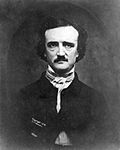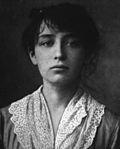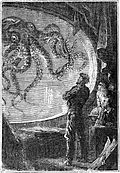Outis facts for kids
Outis (pronounced "OO-tis") is an Ancient Greek word meaning "nobody" or "no one." It's a famous pseudonym (a fake name) that has appeared in many stories and been used by real people to hide their identity.
Contents
The Ancient Greek Story of Outis
The idea of "Outis" became famous thanks to the Greek hero Odysseus. In the epic poem Odyssey, Odysseus and his crew were trapped by a giant, one-eyed monster called Polyphemus.
When Polyphemus asked Odysseus for his name, Odysseus cleverly replied, "My name is Nobody." Later, Odysseus tricked the Cyclops and blinded him.
Polyphemus screamed in pain, and other Cyclopes came running, asking what was wrong. Polyphemus shouted, "Nobody is trying to kill me!" Because he said "Nobody," the other Cyclopes thought he wasn't in danger and didn't come to help him. This trick allowed Odysseus and his men to escape.
The story of Odysseus using "Nobody" is found in Book 9 of the Odyssey. It shows how being clever can help you outsmart even the biggest monsters!
How the Pseudonym Outis Has Been Used
The idea of using "Nobody" as a fake name has inspired many people over time.
Famous Writers and Artists
In 1845, the famous writer Edgar Allan Poe criticized another poet, Henry Wadsworth Longfellow, in a newspaper. A writer who defended Longfellow signed their letters as "Outis" to stay anonymous. People still wonder who this "Outis" really was!
- Henry Stevens was an American book dealer who lived in London. In 1877, he started a literary group called The Hercules Club. He used the name "Mr. Secretary Outis" for this project.
- István Orosz (born 1951) is a Hungarian artist. He uses the pseudonym Utisz, which sounds just like "Outis." Orosz's art often plays with visual tricks, like optical illusions and double meanings. This is like Odysseus's trick on the Cyclops, which was also a "trick on the eye." Orosz sometimes signs his artworks as Utisz, showing how his art, like Odysseus's trick, can deceive what you see.
- "Outis" was also the pseudonym of Henri Antoine Meilheurat des Pruraux, who wrote an article in an Italian magazine in 1903.
"Outis" in TV Shows
- In the fifth season of the TV show Prison Break, the main character, Michael Scoffield, uses the fake name "Kaniel Outis." This show has many connections to the Odyssey, like a prison named after the island where Odysseus was held, and the main bad guy being called Poseidon.
Other Pseudonyms Like "Nemo"
Another famous pseudonym that means "nobody" is "Nemo." This word comes from Latin.
Hablot Knight Browne (1815–1882) was a British artist who drew pictures for many of Charles Dickens's famous books. He first used the pseudonym "N. E. M. O." but later became known as "Phiz."
- Camille Claudel (1864–1943) was a French sculptor. She had a pet canary named "Nemo." Her mentor, Auguste Rodin, sometimes mentioned the bird as if it were Camille's secret identity in his letters.
"Captain Nemo" is a well-known character from Jules Verne's adventure novels, Twenty Thousand Leagues Under the Sea and The Mysterious Island. Captain Nemo is a brilliant scientist who travels the world's oceans in his amazing submarine, the Nautilus.
"Little Nemo" is the main character in a popular comic strip created by Winsor McCay. The comic appeared in newspapers from 1905 to 1913 and showed Nemo's wild dreams.
- The popular animated movie Finding Nemo (2003) also uses this name, though it's about a fish!
Other "Nobody" Pseudonyms
The idea of "nobody" or "no one" as a hidden identity appears in many other places too.
- My Name is Nobody is a 1973 Western comedy film. Its title directly refers to the famous trick used by Odysseus.
- In the Western film Dead Man, a Native American character calls himself "Nobody."
- No One is a rock band from Chicago, Illinois, that has been making music since 1994. Their name also means "no one."
- Harold Cohen (1854-1927) was an American author who wrote science fiction stories using the pseudonyms "Harry Enton" and "Noname." Another writer, Luis Senarens, continued Cohen's popular series and also used "Noname."
- In the TV show Doctor Who, the main character, The Doctor, often keeps his true name a secret. This idea was inspired by the anonymous Time Traveler in the book The Time Machine.
- "Nobody" is a masked hero in the Teenage Mutant Ninja Turtles comics and the 2003 animated TV series.
- The rapper and poet Fatimah Nyeema Warner is known professionally by her stage name Noname.
See also
- Alan Smithee
- Luciano Berio (composer of Outis, a musical work)
- István Orosz
- My Own Self





